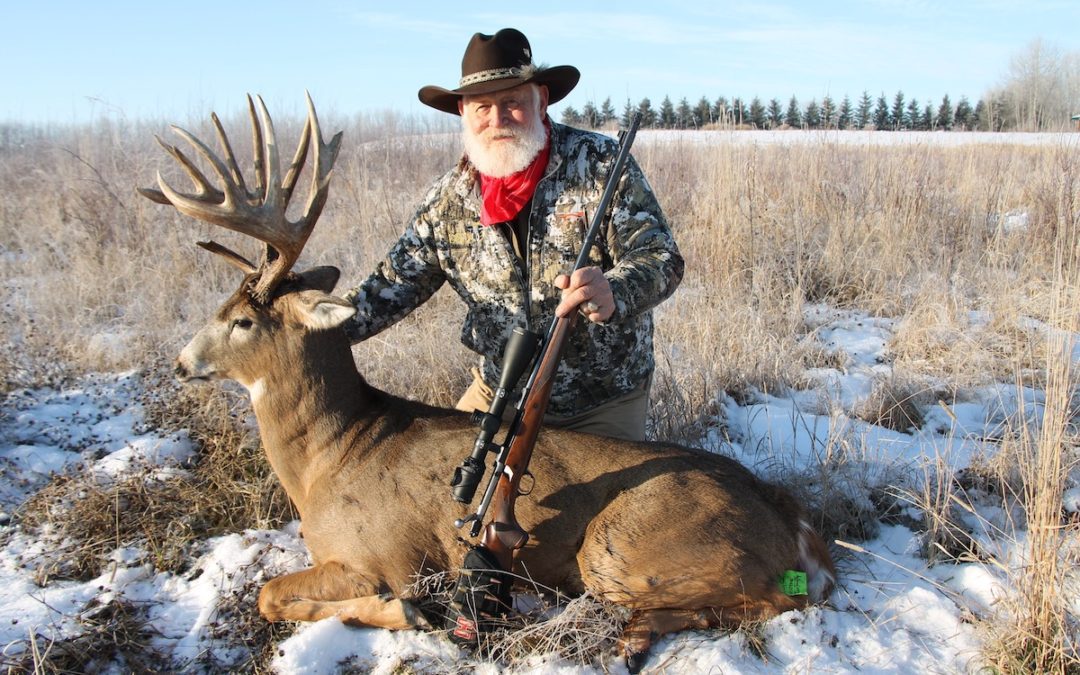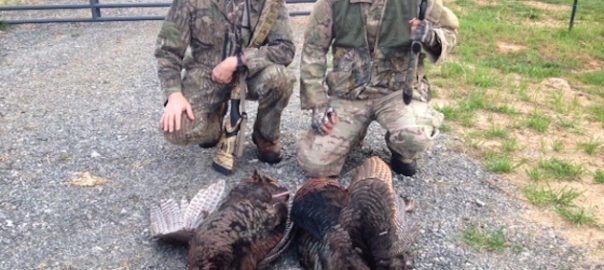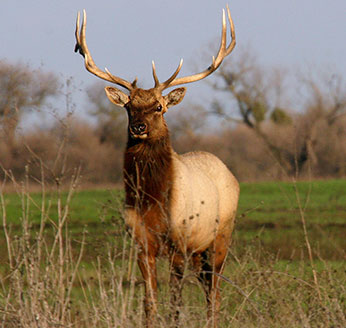A: Shot placement is always paramount, as is bullet’s terminal performance, whether the bullet passes through or stays in the body of the deer.
I am just back from hunting big-bodied whitetails found in north central Alberta, Canada. Habitat varies from open barley and canola fields to extremely dense evergreen forest and river bottoms. While there hunting with a friend, we took two bucks, both approaching 300-pounds live weight. Just prior to that hunt I was in northern Texas where whitetails deer tend to weigh around 200 pounds live weight. Habitat on the Texas property was primarily dense, mid-thigh high shinoak. As this is being written, I’m headed to western Texas to hunt mule deer and from there to the cactus and mesquite of southwestern Texas for another whitetail. My firearms of choice are .280 Remington, .300 Win. Mag. and a .280 Ackley Improved Ruger No. 1. I’ll use Hornady’s Precision Hunter ammo using ELD-X bullets.

On larger bodied whitetail deer, should bullet stay inside or pass through?
I shot two North Texas deer with my .280 Remington. Both were slightly quartered. Both were shot through the chest with the bullet taking out the opposite shoulder. One bullet passed through. The other was lodged just under the skin on the opposite side. Both bucks dropped in their tracks.
In Alberta, my friend missed his shot at about 150 yards, then at 400 yards he shot the deer through both hindquarters with a .270 Win., using Hornady’s 130-grain GMX – Outfitter ammo. The bullet passed through, breaking the left femur and the deer left a substantial blood trail that we could follow. Blood was on both sides of the deer’s tracks. The obvious blood trail ended about 300 yards from where the deer was shot. That is where we found the dead deer. Because of the numerous deer in the area with lots of tracks and the dense woods, had there not been a good blood trail, we might not have recovered the deer that night. He would likely have become a meal for the local coyotes and wolves. The pass-through blood trail made it considerably easier to to follow and find my friend’s deer.
Last afternoon of the Alberta season near sundown, after having passed up three bucks I would have shot anywhere else, a big bodied, monstrously antlered buck walked out of the dense, brushy river bottom. I waited for him to walk 100 yards into the harvested barley field so if he did not fall quickly from my shot, I would have ample opportunity to shoot a second time.
He was stopped broadside at 150 yards. I held a third of the way up from the bottom of his chest. At the shot from my .300 Win. Mag. Ruger 77 African with 200-grain Hornady ELD-X bullet, the near 300-pound buck took five steps and dropped. Later that evening at the skinning shed we found a perfectly mushroomed bullet just under the opposite side skin. The bullet had passed through bone, ribs, severed the heart, then passed through ribs and, as mentioned, found just under the skin on the opposite side.

You can see bullet just below the pistol grip where it stopped just below the skin.
The big-bodied, thick-boned buck received the full extent of the bullet’s energy.
You essentially answered your question. When I hunt where following a blood trail might be difficult, I prefer bullets to pass through after delivering most of the terminal energy within the body before exiting.
However, in most all instances, I personally want the bullet to deliver its hydrostatic shock, do great tissue damage, create a large cavernous wound channel and be found just inside the skin on the opposite side, having expended all its energy within the body of the deer.
Over the years, I have shot a lot of deer just like the recent Alberta buck mentioned, although not with such big antlers. My buck turned out to be my biggest racked whitetail ever. He will make the all time Boone & Crockett non-typical whitetail record book with room to spare.
During my years as a research wildlife biologist, I had the opportunity to necropsy many, many whitetail deer, shot in various places with a great variety of calibers, rounds and bullets. That gave me an opportunity to evaluate shot placement and bullet performance.
What I came away with from those years is that if shot placement was less than perfect, I hoped it was a pass-through, making tracking easier because of blood on both sides of the body.
Your question is one I have been involved in around many campfires both here and abroad. I’ve seen old friends and hunting partners get into some truly heated arguments about what bullets should do upon hitting the animal. Bottom line, regardless of whether the bullet passes through or stays in the body, shot place and the terminal performance of the bullet is what’s important.
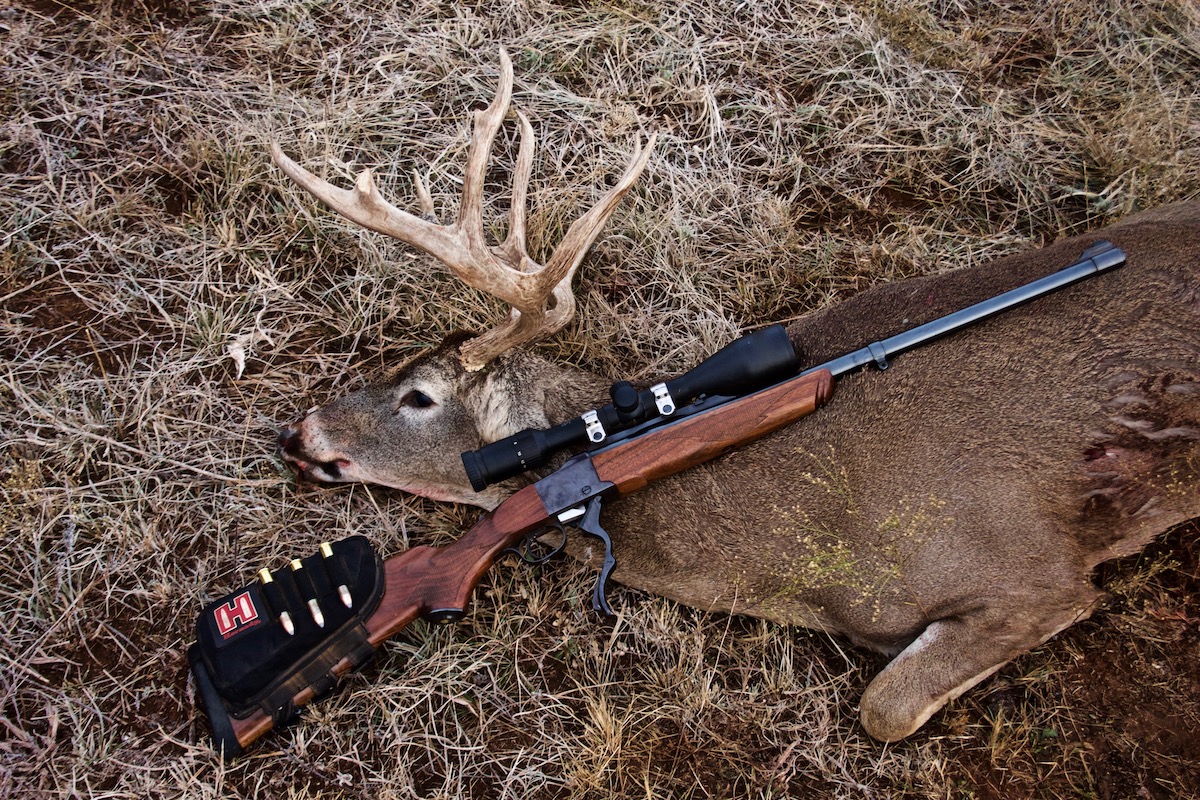
The bullet passed completely through this buck.
Most hunting bullets, shy of solids and those used for shooting varmints, are designed for controlled expansion to create a large wound channel and destroy tissue while creating considerable “hydrostatic shock,” causing damage to vital organs but also creating greater bleeding surfaces, robbing the brain of oxygen, which quickly shuts all body systems down.
All that said, I am a firm believer in a quick follow up shot, and in doing so I try to hit the animal at least four to six inches from where my first shot or strive to place the bullet from a slightly different angle. That creates a second wound channel! Hitting the animal a second or even third time exactly where the first bullet was placed does little to increase the wound channel, while one a few inches away from the first bullet creates more tissue damage.
That said, I believe it is the hunters responsibility to kill the animal humanely and as quickly as possible with his or her first shot, bullet passing through or remaining in the body.

As a wildlife biologist, Larry Weishuhn established quality wildlife management programs on approximately 12,000,000 acres across North America with emphasis on habitat and animal populations. As a writer, he has served on staff on numerous publications in hunting, shooting and wildlife management and has long been involved with the highest quality outdoor television productions.
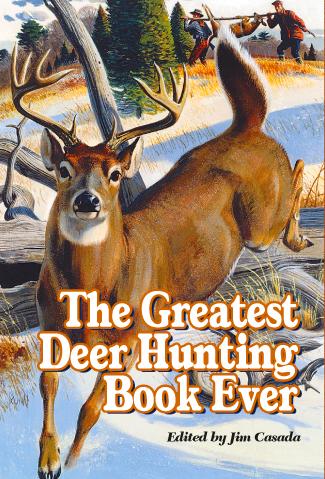 On these pages is a stellar lineup featuring some of the greatest names in American sporting letters. There’s Nobel and Pulitzer prize-winning William Faulkner, the incomparable Robert Ruark in company with his “Old Man,” Archibald Rutledge, perhaps our most prolific teller of whitetail tales, genial Gene Hill, legendary Jack O’Connor,Gordon MacQuarrie and many others. The Greatest Deer Hunting Book Ever provides what is in effect a portable hunt camp, replete with stirring sagas of whitetail delight. In these pages, the deer season is always open and the sport’s joys endlessly unfold. Shop Now
On these pages is a stellar lineup featuring some of the greatest names in American sporting letters. There’s Nobel and Pulitzer prize-winning William Faulkner, the incomparable Robert Ruark in company with his “Old Man,” Archibald Rutledge, perhaps our most prolific teller of whitetail tales, genial Gene Hill, legendary Jack O’Connor,Gordon MacQuarrie and many others. The Greatest Deer Hunting Book Ever provides what is in effect a portable hunt camp, replete with stirring sagas of whitetail delight. In these pages, the deer season is always open and the sport’s joys endlessly unfold. Shop Now
